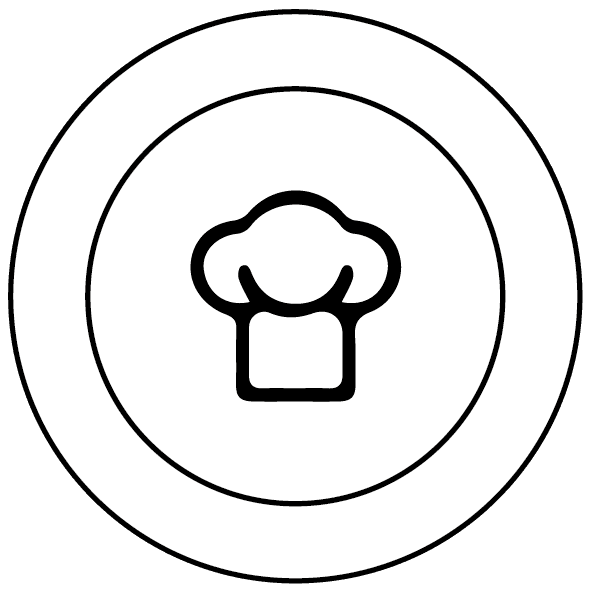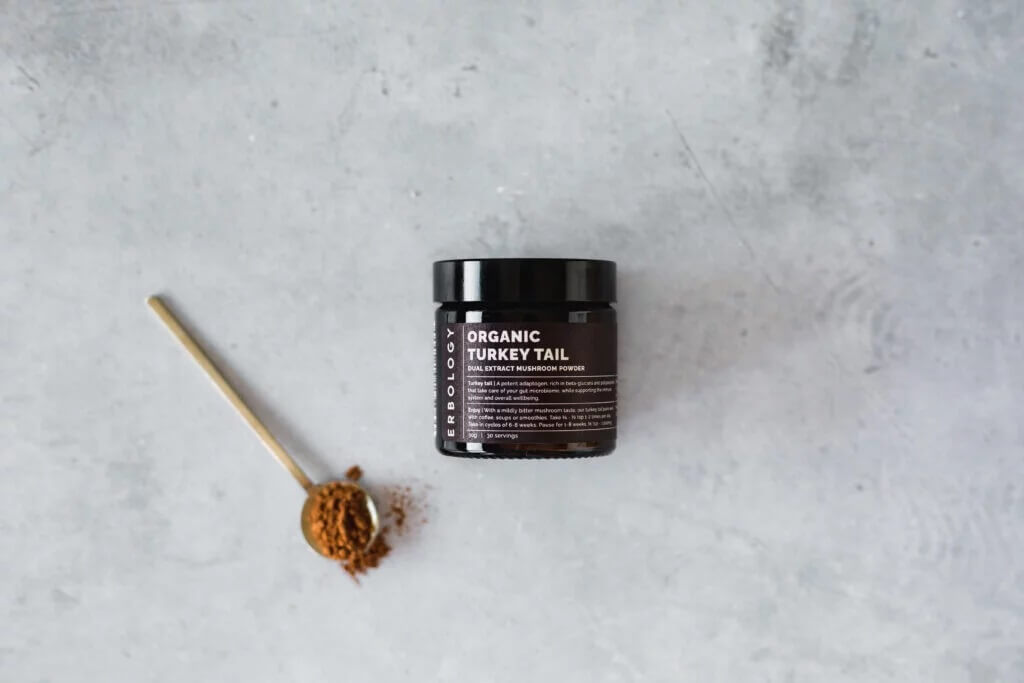How to make oat milk
- 6
Serving

Prep Time 5'

Total Time 8'

Easy

Vegan
- 6
Serving

Prep Time 5'

Total Time 8'

Easy

Vegan
The origins of oat milk
Before we talk about how to make oat milk, let’s take a closer look at where the drink comes from. While some plant-based milks – such as soy milk – date back hundreds of years, oat milk is a definite newcomer on the scene.
In the early 1990s, two researchers at Lund University in Sweden were searching for an environmentally friendly milk suitable for people who were lactose intolerant. Oats are an abundant crop in Sweden, making them a logical starting point. Rickard Öste developed technology that used enzymes to liquify oats while still retaining their wellness-boosting beta-glucans.(1) He and his brother Björn founded Oatly in 1994, and the company has since gone from strength to strength. And, of course, there are now plenty of other oat milk options for us to choose from.
One reason for the drink’s impressive rise in popularity is the fact that it works so well in coffee.(2) That, and it uses less water than almond and rice milk (not to mention dairy).(3) Plus, because it’s free from soy, nuts, gluten, and lactose, it’s suitable for most people with food allergies and intolerances.
So, why might you want to know how to make oat milk at home when it’s easy to buy it at the supermarket? Well, first, it’s fresh – and you know exactly what’s in it. And second, you’re able to customize it to your personal tastes. From adjusting the sweetness to adding extra health-boosting ingredients like medicinal mushroom powders, you can truly make it your own.
And speaking of health-boosting ingredients, the oats themselves are bursting with nutritional benefits. We’ll discuss some of those now, then explain exactly how to make oat milk.
Oat milk’s health benefits
The majority of the benefits of oat milk come from the oats. These are highly nutritious, with plenty of B vitamins and key minerals such as manganese, copper, zinc, magnesium, and phosphorus. In addition, oats are rich in antioxidants, which defend our cells against the damage caused by free radicals. Of particular note are compounds called avenanthramides. Research suggests that these polyphenols help to lower blood pressure and also possess anti-inflammatory properties.(4)
Many of the other health benefits of oats are thanks to the fact that they contain potent polysaccharides called beta-glucans. And knowing how to make oat milk is a great tactic for getting more of this soluble fiber in your diet. One major advantage of consuming beta-glucans is that they boost the health of your gut. The fiber nourishes the good bacteria there, which has a positive effect on everything from immunity to brain health.(5) It can also decrease levels of bad bacteria in the gut, further contributing to a flourishing microbiome.
Moreover, beta-glucans help to protect heart health. Studies show the fiber can reduce levels of ‘bad’ LDL cholesterol in the blood.(6) This is important because LDL cholesterol can build up on the walls of your arteries, decreasing flexibility and blood flow. In turn, that increases the risk of heart attack and stroke. Oats may also prevent LDL cholesterol from oxidation, further lowering the risk of heart disease.
Interestingly, oats might additionally help with blood sugar control. The beta-glucans they contain can improve insulin sensitivity, plus delay the absorption of glucose into the blood.(7) This could work to lower the chances of developing type 2 diabetes, or assist in managing the condition.
How to make your own oat milk
Now that you know why it’s so good for you, it’s time to go over how to make oat milk. It might surprise you just how simple it can be!
For this recipe, start by adding a cup of rolled oats to a blender. Choosing a brand that’s certified as gluten free will ensure your oat milk is too. Then pop in two pitted dates – we find Medjool dates to be a superb choice, as they’re soft and sweet. You can adjust the amount you use in order to achieve your desired level of sweetness in the drink.
Next, sprinkle a pinch of salt on top, then pour in a teaspoon of vanilla extract. Again, you’re able to use more or less of both these ingredients to suit your tastes. Likewise, you could experiment with other natural flavorings if you’d like. This is an ideal way to create oat milk for use in a specific recipe.
Now it’s time to add the special ingredients: our dual extract mushroom powders. We’ve recommended using half a teaspoon each of agaricus blazei and turkey tail. We’ll talk about the individual benefits of these varieties below, but feel free to swap them for other functional fungi. That’s one option for how to make oat milk tailored to your personal health needs and goals.
Finally, pour in four cups of water. Once you’ve added all the ingredients, blend the mixture until it’s smooth in texture and a rich cream color. The last step is to strain it using a milk bag or fine sieve to remove any oat remnants. Store the drink in the fridge in a sealed container, and shake well before serving.
Dates: adding more than sweetness
This is just one of many recipes for how to make homemade oat milk. And one of the biggest variations between them is the sweetener. Maple syrup is a common choice, but in this recipe we’ve opted to use dates instead. Here’s why.
Firstly, they add a deliciously rich texture and subtle caramel flavor to the drink. Secondly, dates bring numerous health benefits of their own to your oat milk. For instance, dates are bursting with key nutrients such as vitamin B6, copper, calcium, magnesium, and potassium. Several of these are crucial for the development of healthy bones. Dates are also high in fiber, which aids digestion by promoting regular bowel movements.
Another reason we’ve included dates in this guide to how to make oat milk is their high level of antioxidants. The fruit is particularly rich in flavonoids and phenolic acids, both of which possess anti-inflammatory properties. This is beneficial because chronic inflammation can damage healthy cells, leading to the development of harmful conditions like cancer. Dates also contain carotenoids, which support the health of your heart and eyes.
Interestingly, dates may additionally improve brain health thanks to these anti-inflammatory and antioxidant compounds. Studies have found that date consumption might lower the risk of neurodegenerative conditions such as Alzheimer’s.(8) What’s more, the fruit could help to enhance cognitive functions like memory and learning.(9) However, further research is necessary to confirm this.
Finally, eating dates might promote labor and reduce labor duration by mimicking the effects of oxytocin in the body.(10)
Would you prefer a recipe that’s not so sweet? Simply follow the above instructions on how to make oat milk and reduce or leave out the dates.
Mushrooms in milk – not as weird as it sounds!
We assume you weren’t expecting to see medicinal mushroom powders in a guide on how to make oat milk! They might sound like unusual ingredients, however there are several very good reasons why we’ve included them.
For starters, just like oats, functional fungi are rich in beta-glucans. As such, they help to support your immune system, cardiovascular system, and gut health. Moreover, medicinal mushrooms act as adaptogens. These are plants which reduce the negative impacts of different kinds of stress on the mind and body. Research shows that chronic stress can contribute to several harmful conditions, including high blood pressure, obesity, depression, and insomnia. That makes this a key advantage.
On top of these general benefits, each type of functional fungi has its own unique strengths. In this recipe for how to make oat milk, we’ve used agaricus blazei and turkey tail. Of course, you can swap these for different species that better suit your needs if appropriate.
Beginning with agaricus blazei, this mushroom may support cardiovascular health in a number of ways. Studies suggest it could lower inflammation thanks to sterols such as ergosterol, plus decrease cholesterol and blood pressure. All of which lowers the risk of heart disease and stroke. What's more, it contains powerful antioxidants like ergothioneine, which protect cells from free radical damage.
Turkey tail, meanwhile, is one of the best mushrooms for gut health. It functions as a prebiotic, encouraging the growth of good bacteria and nourishing the gut microbiome. This bolsters digestive health and enhances overall wellbeing in a wealth of ways.
So, learning how to make oat milk with mushroom powders might be more beneficial than you first thought!
Meet our dual mushroom extracts
You’ll notice that this guide to how to make oat milk uses two of our new dual extract mushroom powders. These are similar to our whole mushroom powders, but go through some extra steps during the production process.
First, our team of expert mycologists cultivates the fungi on organic substrates, under meticulously controlled conditions in Europe. They then carefully dry the mushrooms and grind them into a fine powder. Next, we steep the powder in both water and alcohol – a dual extraction process – to separate out specific beneficial compounds. Finally, we combine the two extracts to give you a wider range of secondary metabolites in one concentrated powder.
Does this mean dual extracts are better than whole mushroom powders? Not necessarily. The latter have a broader spectrum of nutrients, plus higher levels of certain vitamins and minerals. As such, the best choice for you depends on what’s most appropriate for your needs.
Either way, you can rest assured that you’re in safe hands with our medicinal mushroom products. We have our fungi checked by an independent and accredited quality checker to confirm that they’re rich in valuable beta-glucans and secondary metabolites. We can therefore say with confidence that our extracts are among the most potent on the market. Moreover, we don’t use any pesticides or other chemicals when growing our fungi.
Besides using mushroom powders in this recipe for how to make oat milk, you could try brewing traditional mushroom tea with them. They also work brilliantly in dishes like soups, stews, and risottos, where the hot water can draw out the nutrients. The mildly bitter, nutty, and earthy flavor complements a wide variety of savory meals. It even pairs surprisingly well with coffee and chocolate!
How to use your homemade oat milk
Now that you know how to make oat milk at home, let’s talk about what to do with it! You probably already have plenty of ideas, so we’ll keep this short and sweet.
Most obviously, you can use homemade oat milk in cereal, or stir a dash into tea, coffee, or hot chocolate. Likewise, it will work in any sweet or savory recipe that calls for store-bought milk. One fabulous thing about knowing how to make oat milk yourself is that you’re able to adjust the flavor profile to fit specific uses or dishes.
For instance, when using your oat milk in savory meals, you might want to leave out the dates and vanilla. Conversely, if you’re adding it to cakes or other desserts, we recommend leaving those ingredients in. You could also think about including other natural flavorings – such as cocoa powder or strawberries – to better suit certain bakes. The only limit is your imagination! You might never buy your oat milk from the supermarket again…
Ingredients
- 1 cup rolled oats
- 2 whole dates, pitted
- Pinch of salt
- 1 tsp vanilla extract
- ½ tsp Erbology Organic Agaricus Blazei Extract Mushroom Powder
- ½ tsp Erbology Organic Turkey Tail Extract Mushroom Powder
- 4 cups water
Typical nutrition / serving
- Serv. size: 180 g
- Serv. size text: 48 g
- Servings: 1 g
- Total Fat: 1 g
- Cholesterol: 12.5 mg
- Total Сarbohydrate: 13 g
- Protein: 3 g
Here's how you make it
- In a high speed blender, add the rolled oats together with the pitted dates, salt, vanilla, mushroom extracts and water.
- Blend well then strain using a milk bag or a fine sieve. You can repeat this step to remove any oat remnants.
- Transfer to a sealed container and refrigerate. Will keep in the refrigerator for up to 5 days. Shake wellbefore serving and enjoy cold!
If you tried this recipe...
Share your experience with us. Leave a comment below or post a picture on Instagram, tag @erbologyofficial #erbology and get a chance to win a healthy treat from us.
